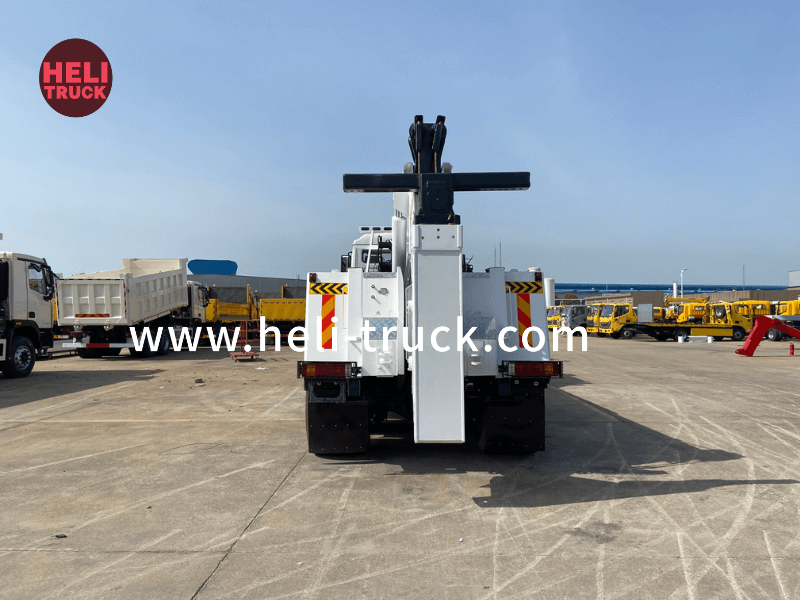Fire Truck Hazmat Response Safeguarding Communities in Times of Chemical Emergencies
Introduction
Firefighters play a critical role in safeguarding communities from various emergencies, including hazardous materials incidents. When hazardous materials, or hazmat, incidents occur, specialized fire trucks equipped with the necessary tools and resources are deployed to mitigate the situation. This article explores the importance of fire truck hazmat response in protecting public safety, the specialized equipment and training required for hazmat incidents, and the procedures involved in responding to such emergencies.
Importance of Fire Truck Hazmat Response
Hazmat incidents pose serious risks to both public health and the environment. These incidents can involve chemical spills, gas leaks, or other hazardous materials releases that have the potential to cause harm to individuals, property, and natural resources. Firefighters trained in hazmat response are equipped to assess, contain, and mitigate these incidents effectively, minimizing the impact on the community.
Fire truck hazmat response is essential in ensuring a swift and coordinated reaction to hazmat incidents. These specialized vehicles are equipped with advanced detection and monitoring equipment, protective gear for firefighters, decontamination facilities, and other resources specifically designed for handling hazardous materials. By having dedicated hazmat response capabilities within fire departments, communities can be better prepared to address these complex emergencies.
Specialized Equipment and Training
Fire trucks used for hazmat response are equipped with a range of specialized equipment to handle different types of hazardous materials incidents. Some of the key equipment found on hazmat response vehicles includes:
1. Portable Gas Detectors: These devices are used to detect the presence of toxic gases in the air and help firefighters assess the level of contamination at the scene.
2. Chemical Protective Suits: Firefighters wear specialized suits that provide protection against chemical exposure during hazmat incidents. These suits are designed to prevent skin contact with hazardous materials and are an essential component of hazmat response.

3. Decontamination Showers: Hazmat response vehicles are equipped with decontamination showers to allow firefighters to remove any hazardous substances from their bodies after exposure. Proper decontamination procedures are crucial in preventing secondary contamination and ensuring the safety of personnel.
4. Spill Control and Containment Equipment: Hazmat response vehicles carry tools such as absorbent materials, containment booms, and pumps to control and contain chemical spills effectively. Quick containment of spills is essential in preventing further environmental damage.
In addition to specialized equipment, firefighters involved in hazmat response undergo extensive training to handle these complex incidents safely and efficiently. Hazmat training covers topics such as chemical properties, hazard identification, personal protective equipment (PPE) use, decontamination procedures, and incident command system protocols. By receiving comprehensive training, firefighters are better prepared to respond to hazmat incidents and protect both themselves and the community.
Procedures for Hazmat Response
When a hazmat incident occurs, firefighters follow established procedures to assess the situation, implement a response plan, and mitigate the incident. The following are the key steps involved in hazmat response:
1. Size-Up: Upon arrival at the scene, firefighters conduct a size-up to assess the nature and extent of the hazmat incident. This involves identifying the type of hazardous material involved, determining the potential risks to personnel and the environment, and establishing a safe perimeter around the incident.
2. Establishing Command: A command structure is established to oversee the hazmat response operation. The incident commander is responsible for overall decision-making and coordination of resources, ensuring a systematic and organized response to the incident.
3. Risk Assessment: Firefighters conduct a risk assessment to evaluate the potential hazards associated with the hazmat incident. This includes identifying the physical and chemical properties of the hazardous material, assessing exposure risks, and determining appropriate control measures.
4. Containment and Mitigation: Firefighters work to contain the spread of the hazardous material and mitigate its impact on the environment. This may involve deploying containment booms, applying absorbent materials, or using specialized equipment to transfer the material to secure containers.
5. Decontamination: Personnel involved in the hazmat response undergo decontamination procedures to remove any hazardous substances from their bodies and equipment. Decontamination showers are used to wash off contaminants and prevent further exposure.
6. Monitoring and Cleanup: Once the hazmat incident is under control, firefighters conduct air monitoring to ensure that the area is safe for reentry. Cleanup operations are then initiated to remove any remaining hazardous materials and restore the site to a safe condition.
Conclusion
Fire truck hazmat response plays a crucial role in protecting communities from the dangers posed by hazardous materials incidents. By Work truck tax deductions for businesses with specialized vehicles, equipment, and trained personnel, communities can effectively respond to hazmat emergencies and minimize the impact on public safety and the environment. Through comprehensive training, adherence to established procedures, and coordinated teamwork, firefighters are able to mitigate the risks associated with hazmat incidents and safeguard the well-being of the community.